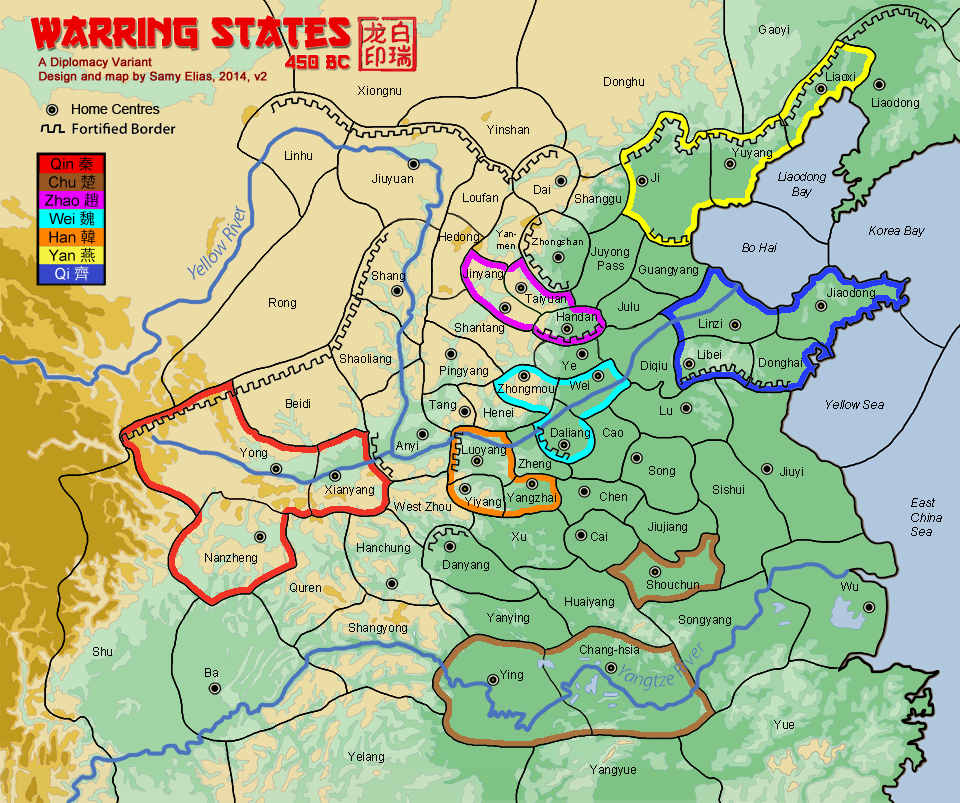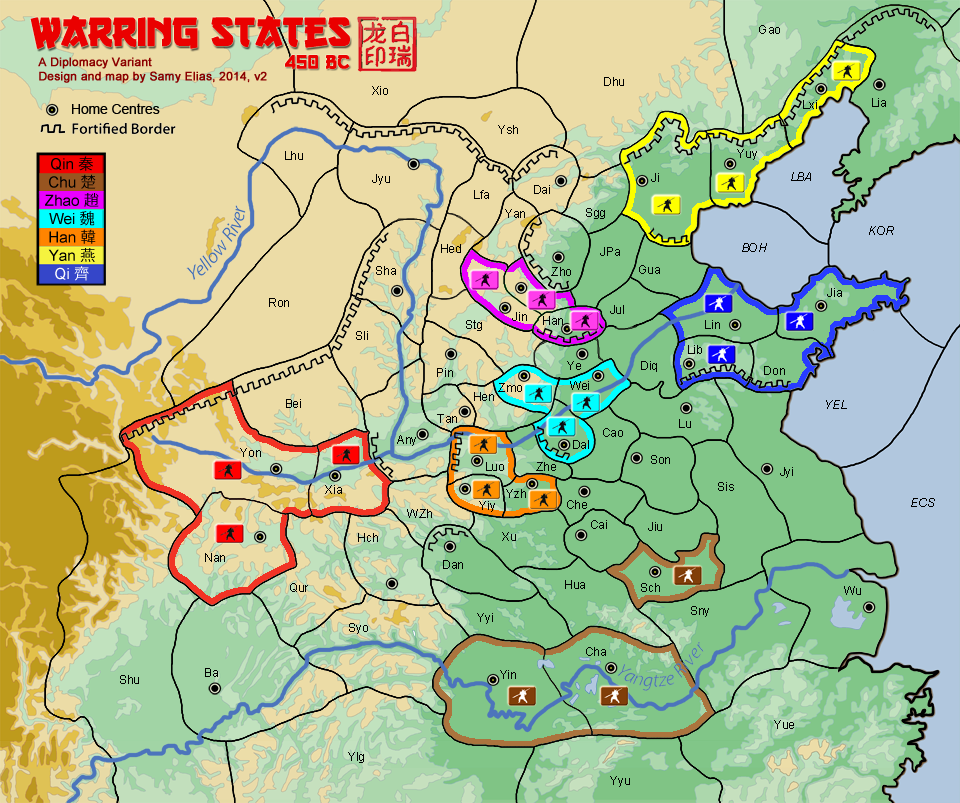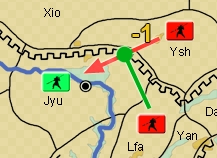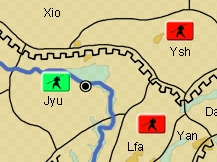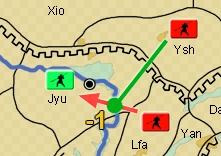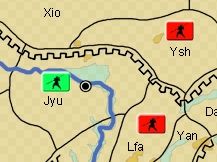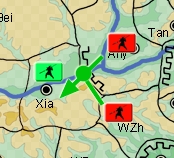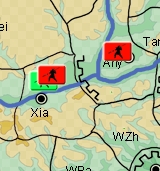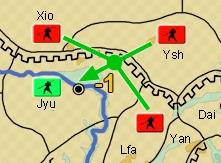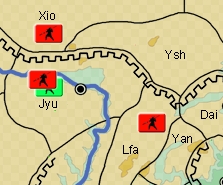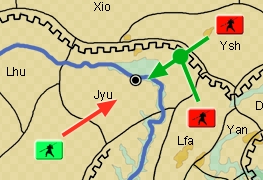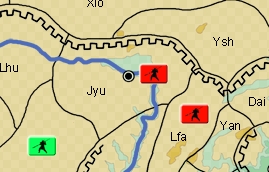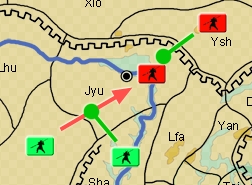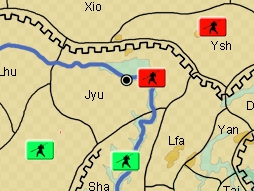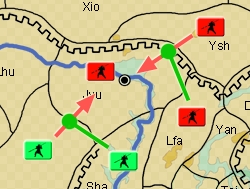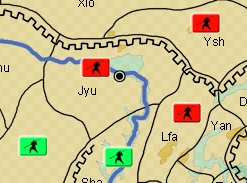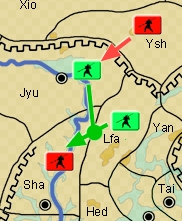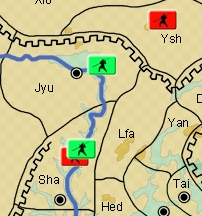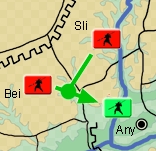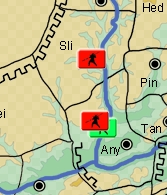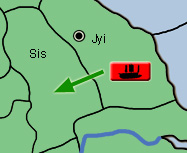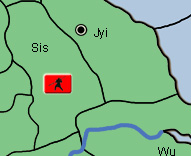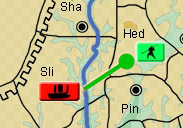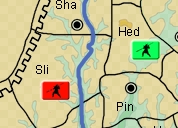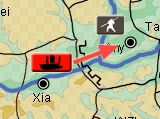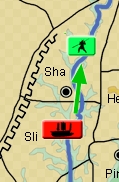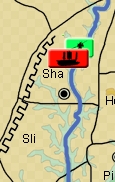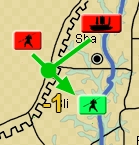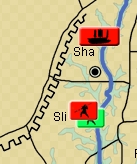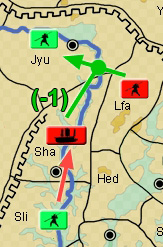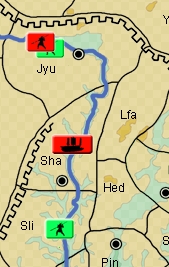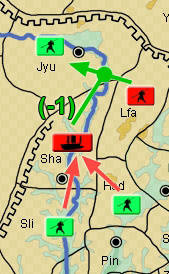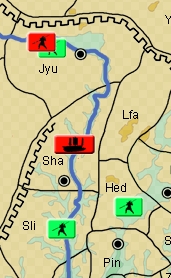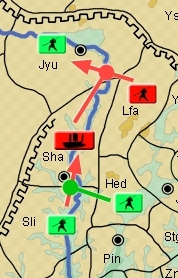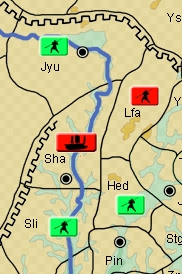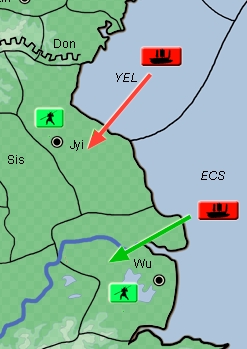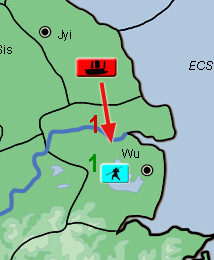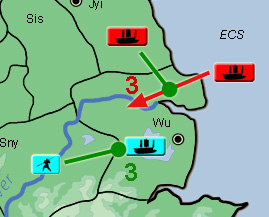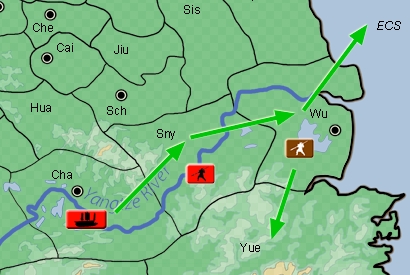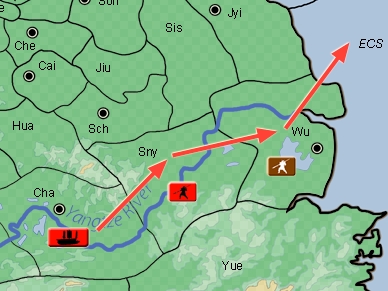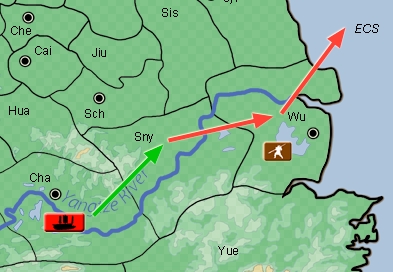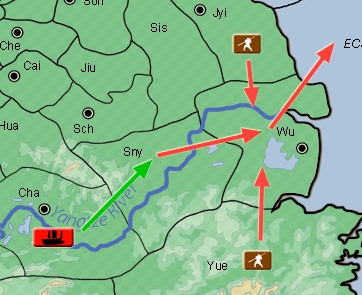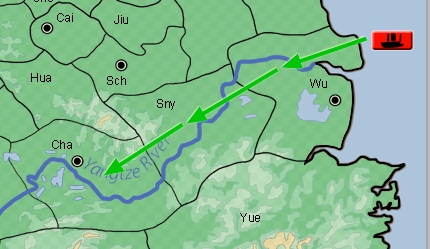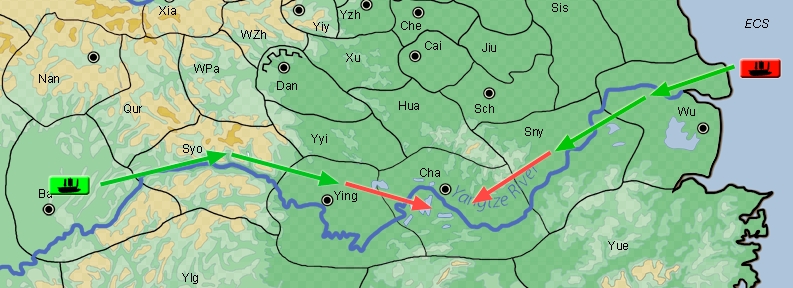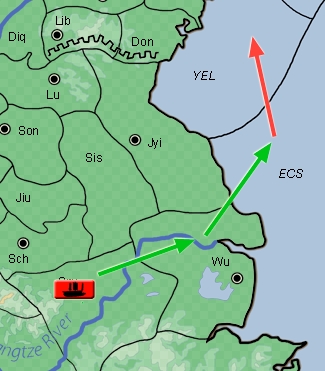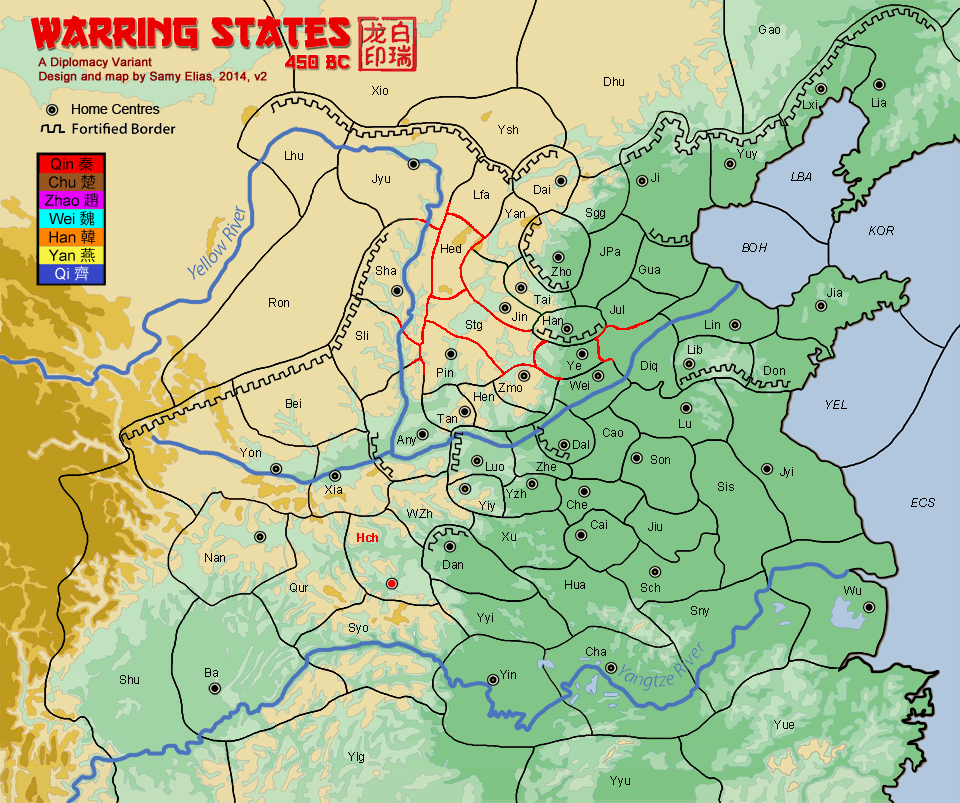Warring States v2
Introduction
Created by: Samy Elias / zurn
After researching this period a little, I was surprised how thematically well-suited the Warring States era of 450BC-220BC is for a Diplomacy variant. There were seven major states at the time, who allied with and fought each other in various combinations, shifting allegiances just as in any good Diplomacy game. As a dominant power started to rise (Qin), the opposing states decided on different strategies in order to best deal the the threat; at times some decided on a "horizontal alliance" (allying with the Qin) or a "vertical alliance" (allying with each other against the Qin). Several famous advisors at the time who offered their services to various leaders were even known collectively as the "School of Diplomacy"! Sun Tzu had written The Art of War just before this period, and his works were heavily consulted by all competing states during the conflicts. Conscription systems ensured armies of 100,000+ soldiers on all sides.
This variant incorporates the major rivers and wall fortifications of the time. Besides the Great Wall of China, there were many internal walls built by the various factions to defend themselves against each other and various raiders. I used these two features to give the region the terrain diversity that makes the original Diplomacy board an interesting setting, with its many separated seas. Fleets are available but are built and used differently than in standard Diplomacy. They reflect the legendary and powerful "Floating Fortresses" or "Castle Ships" of the time ("lou chuan"), massive and sometimes equipped with trebuchets. Fleets are extra powerful along rivers, and very mobile when unopposed.
The seven great powers are Qin, Chu, Zhao, Wei, Han, Yan, and Qi. Rule changes are covered below.
Map
Full names, without starting units
Abbreviations, with starting units
Playtest Games
/r/Kingdom on Reddit finds my map and plays a game
Rules
All the rules of standard Diplomacy apply save those noted below:
Great Powers and Starting Forces
All the main powers start with three armies, starting on Home Supply Centres.
Qin: A Yong, A Nanzheng, A Xianyang; Ruler: Qin Ligong Chu: A Ying, A Chang-hsia, A Shouchun; Ruler: Chu Huiwang Zhao: A Jinyang, A Taiyuan, A Handan; Ruler: Zhao Jianzi Wei: A Zhongmou, A Wei, A Daliang; Ruler: Wei Huanzi Han: A Luoyang, A Yiyang, A Yangzhai; Ruler: Han Kangzi Yan: A Ji, A Yuyang, A Liaoxi; Ruler: Yan Chenggong Qi: A Linzi, A Jiaodong, A Libei; Ruler: Qi Xuangong
Victory
There are 39 Supply Centres; 18 are needed to win. If there is a tie at 18, play continues until one power has more than the other, or until a draw is agreed on.
Map Notes
All named areas are in play; there are no impassable areas. (The "Yellow River" label to the west does not count as naming an area.)
Fortified borders (or walls) help in the defense of the province containing the wall, if that border is involved (see full rules below).
The rivers are a game terrain feature, and affect Fleets (see full rules below). They do not affect army movement.
The border between Luoyang and West Zhou does NOT have a wall.
Fortified Borders (Walls)
Provinces with walls are harder to attack if occupied; attacks or supports into the province (if occupied) are affected if they go over the walled border.
1. Attacks against a province with a wall are reduced by one in strength if:
a) the province is occupied by an opponent's unit at the start of the turn, AND b) the attack goes across the fortified border, or is supported from across the fortified border by another unit.
This is not cumulative; the strength cannot be reduced by more than one for a single attack.
2. Support Hold orders are not affected by fortified borders.
3. A unit's attacks are never affected by walls in its own province.
4. Attacks or supports for attacks on your own units over walls are not affected by the wall (for the purposes of self-standoffs).
5. An attack reduced to zero strength cannot cut support. (So an army attacking over a wall with no support cannot cut support.)
Fleets
Fleets are upgraded from Armies, and can revert back to Armies:
1. Fleets cannot be built in the adjustment phase. Instead Armies are upgraded to Fleets using the Raise order during a movement phase (eg. "Army Ji Raise Fleet", or "A Ji R F"). This is treated as a Hold order for support purposes (units can support it as if it were holding).
2. A Fleet can only be raised on a coastal or river province.
3. If a unit using the Raise order is dislodged, the Raise order fails. Otherwise, the Army is replaced with a Fleet.
4. Fleets can move to, support into, and retreat to sea areas, coastal provinces, or along rivers.
5. There is no convoy order.
6. If a Fleet attempts to move, retreat, or support to a province that it could only move to as an Army, it reverts back into an Army. The reverted Army then carries out the order. If such a support order fails because the support order did not match the move order of the supported unit, this still counts as an attempted support. If the order is completely invalid (improper syntax, province names, invalid targets, etc.) it is NOT considered an attempt, since the unit is effectively given a hold order.
Floating Fortress bonus
Fleets on a river get a special bonus from powerful castle ships:
1. A Fleet in a river province or sea area issuing a move or support order targetting a neighbouring river province (*not* a sea area) does so with a strength of 2.
2. A Fleet on a river defends with a strength of 2.
3. A Fleet supporting using the Floating Fortress bonus can have its support cut, but only by an amount equal to strength of the strongest cutting attack. So, a one-strength attack on a Floating Fortress that is supporting cuts only one strength worth of support, leaving one remaining. A two-strength attack will cut the full 2 strength support. Two one-strength attacks will only cut one strength of support. In keeping with the spirit of the original Diplomacy rules, a unit's supports do not contribute to cutting supports for attacks on itself.
Rapid River Move (Fleets)
Fleets can make a Rapid River Move, which allows fast travel along rivers, but at zero strength:
1. Fleets can perform a special type move called an Rapid River Move. This allows a Fleet to move up to 3 spaces in one move turn, into consecutive river spaces. The move can start or end on a sea space (all other spaces involved being river spaces). eg. Bo Hai -> Linzi -> Diqui -> Wei is valid, as is the reverse; so is Xianyang -> Anyi -> Luoyang -> Zheng. However Korea Bay -> Bo Hai -> Linzi -> Diqui is not valid.
2. Rapid River Moves have zero strength while moving. If a failed Rapid River Move forces a Fleet to remain at its starting point, it defends with its normal strength (2 in river provinces, 1 everywhere else). However, since it has attempted a move, it cannot receive supports to hold.
3. Fleets using Rapid River Move cannot be supported. (So their strength while moving will always be zero.)
4. A Powers' own units do not block a Fleet's Rapid River Move (exception: other fleets using Rapid River Move, see below). The final target destination must be vacant (after other orders are resolved) for the move to succeed. All intervening spaces must either be vacant or occupied by friendly units after all other other orders are resolved. Spaces where a stand off has occurred involving at least one opponent's unit block a Rapid River move. The first intervening space along the route that fails these conditions stops the movement short; the Fleet is then left at the last vacant space that it could move through, after other orders are resolved. If this would leave the Fleet at its starting space, it is vulnerable to being attacked and/or dislodged.
5. If multiple Fleets use Rapid River Moves, they are resolved simultaneously one space at a time to check for interference. A stand off between two Fleets Rapid River Moving can occur; Fleets using Rapid River Move cannot pass through each other, even if from the same power.
Home Supply Centres
1. All starting Supply Centres (SC) are Home Supply Centres (HSC).
2. Captured HSCs from other powers are also considered HSCs for the new owner, and so can be used for builds.
Common Misconceptions and Mistakes
- Raising a Fleet counts as a hold, and is does not fail unless dislodged; so you can raise a fleet successfully while being supported, and while under attack.
- Even an unsuccessful inland order by a fleet will cause it to revert to an army; and after it reverts, it still attempts to carry out the order
- Walls only protect the unit that's in the same province as the wall, not the province on the other side. Think of them as being owned (and manned) only by that province.
Examples of Play
These examples are included to illustrate the various rules and their effects. Arrows indicate moves/attacks, and lines with dots at the end indicate support (the dot indicating the move order/unit supported). Green orders are successful, red ones fail or are cut supports.
Fortified Border Examples
Wall Example 1
Wall reduces attack strength by 1 due to attack over wall
Orders and result
Wall Example 2
Wall reduces attack strength by 1 due to support over wall
Orders and result
Wall Example 2.5
Wall only helps if it's on the defender's side.
NOTE: There's an error in the second image, the army in Any should be the one that is moved to Xia.
Orders and result
Wall Example 3
Walls can only reduce an attack by one strength total.
Orders and result
Wall Example 4
Wall has no effect if the walled province was unoccupied before orders.
Orders and result
Wall Example 5
Support Hold orders not affected by wall.
Orders and result
Wall Example 6
Attacks on your own units not affected by wall.
Orders and result
Wall Example 7
Zero strength attack cannot cut a support.
Orders and result
Wall Example 8
Wall only helps if it covers the part of the border being used.
Orders and result
Fleet Examples
Fleet Example 1
A Fleet moving inland succeeds but reverts to an Army.
Fleet Example 2
Fleet supporting inland succeeds (with strength of 1), but reverts fleet to army. Even a failed support, or a support invalidated due to the target not holding, would revert the fleet to an army if the target is inland.
Floating Fortress Examples
Floating Fortress Example 1
Fleet strength reduced by wall from 2 to 1, 1v1, attack fails.
Floating Fortress Example 2
2v1, attack succeeds.
Floating Fortress Example 3
2 support and 1 attack minus 1 from wall, 2v1.
Floating Fortress Example 5
Attack on the fleet only cuts one strength's worth of support, still enough to succeed, 2v1.
Floating Fortress Example 6
Support strength is cut by the amount of the strongest cutting attack, which is 1. 2v1.
Floating Fortress Example 7
Strongest cutting attack is 2, support fully cut.
Floating Fortress Example 8
Floating Fortress applies when target is a river province that the fleet can move to. The move into Wu succeeds.
Floating Fortress Example 9
The Fleet is not in a sea or river when attacking a river province, and so attacks with a regular strength of 1 (ie. no Floating Fortress bonus).
Floating Fortress Example 10
The red Fleet in Jyi supports with a strength of 1, not 2, since it is not in a river or sea when supporting into Wu (a river province). Fleet ECS *is* in a sea, and so attacks Wu as a 2 strength unit. So the total attack strength is 3. Fleet Wu defends using the Floating Fortress bonus since it's in a river province, and along with the support from Sny defends with strength 3 and so repels the attack.
Rapid River Move Examples
Rapid River Move Example 1
Friendly unit and enemy unit successfully moving away from move path means the 3-space move succeeds.
Rapid River Move Example 2
Enemy unit blocks, most recent vacant space is the starting space, so the fleet does not move.
Rapid River Move Example 3
Enemy unit blocks, most recent vacant space is the first target space.
Rapid River Move Example 4
Enemy standoff block movement. (Friendly standoff wouldn't.)
Rapid River Move Example 5
Can start in sea space.
Rapid River Move Example 6
Competing Rapid River moves resolved one space at a time.
Rapid River Move Example 7
First or last space can be sea space, not intervening space.
Changes from v1
Previous version: Warring States
Borders were changed to improve balance between Zhao and Wei (shown in red below). In addition, Wu Pass was renamed to Hanchung and made a neutral Supply Centre.
History links
An interesting slide show of 7 great battles of the Warring States and Spring and Autumn periods
Abbreviations
| Anyi | Any |
| Ba | Ba |
| Beidi | Bei |
| Bo Hai | BOH |
| Cai | Cai |
| Cao | Cao |
| Chang-hsia | Cha |
| Chen | Che |
| Dai | Dai |
| Daliang | Dal |
| Danyang | Dan |
| Diqiu | Diq |
| Donghai | Don |
| Donghu | Dhu |
| East China Sea | ECS |
| Gaoyi | Gao |
| Guangyang | Gua |
| Hanchung | Hch |
| Handan | Han |
| Hedong | Hed |
| Henei | Hen |
| Huaiyang | Hua |
| Ji | Ji |
| Jiaodong | Jia |
| Jinyang | Jin |
| Jiujiang | Jiu |
| Jiuyi | Jyi |
| Jiuyuan | Jyu |
| Julu | Jul |
| Juyong Pass | JPa |
| Korea Bay | KOR |
| Liaodong | Lia |
| Liaodong Bay | LBA |
| Liaoxi | Lxi |
| Libei | Lib |
| Linhu | Lhu |
| Linzi | Lin |
| Loufan | Lfa |
| Lu | Lu |
| Luoyang | Luo |
| Nanzheng | Nan |
| Pingyang | Pin |
| Quren | Qur |
| Rong | Ron |
| Shang | Sha |
| Shanggu | Sgg |
| Shangyong | Syo |
| Shantang | Stg |
| Shaoliang | Sli |
| Shouchun | Sch |
| Shu | Shu |
| Sishui | Sis |
| Song | Son |
| Songyang | Sny |
| Taiyuan | Tai |
| Tang | Tan |
| Wei | Wei |
| Wu | Wu |
| Wu Pass | WPa |
| Xianyang | Xia |
| Xiongnu | Xio |
| Xu | Xu |
| Yangyue | Yyu |
| Yangzhai | Yzh |
| Yanmen | Yan |
| Yanying | Yyi |
| Ye | Ye |
| Yelang | Ylg |
| Yellow Sea | YEL |
| Ying | Yin |
| Yinshan | Ysh |
| Yiyang | Yiy |
| Yong | Yon |
| Yue | Yue |
| Yuyang | Yuy |
| Zheng | Zhe |
| Zhongmou | Zmo |
| Zhongshan | Zho |
